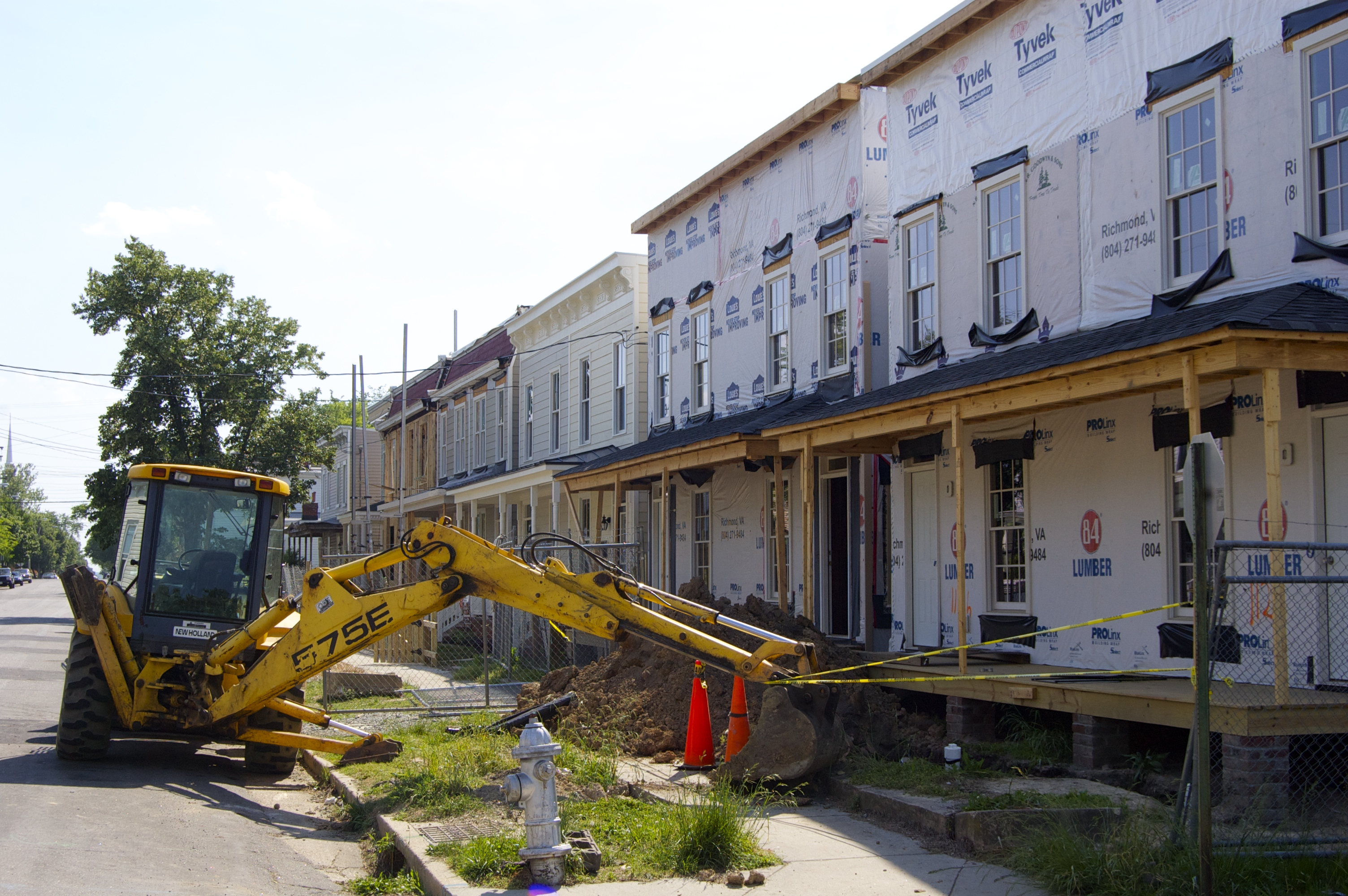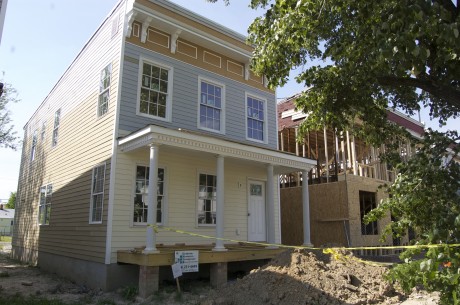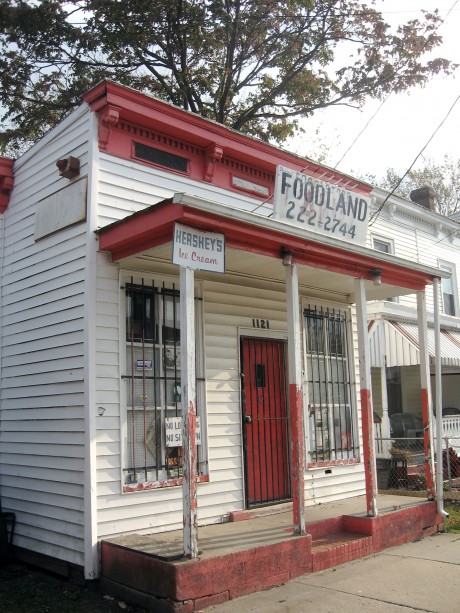RECENT COMMENTS

Rebirth on 31st Street
Eleven families will soon be able to move into new or renovated homes on the west side of the 1100 block of 31st Street, a street that has been majority vacant for years.
The entire stretch of houses on 31st Street are being done simultaneously, the effect of which is amazing if you can remember the feeling of the block back in 2009 or before.
— ∮∮∮ —
— ∮∮∮ —
The work is being carried by project:Homes (formerly Elderhomes) and Southside Community Development and Housing Corporation as part of a $1,000,000+ City of Richmond Neighborhood Stabilization Program to convert blighted homes into affordable housing. The grant-funded program is focussing on 4 areas of the city: Jefferson Davis Highway/Chicago Avenue, Fairmount/Brauer, Oakwood/31st Street, and Mechanicsville Turnpike/Eastview.
A representative for project:Homes said at a recent open house that contracts are already in on a few of the houses. The 1,467 square foot, 2 bedroom/2 bath house at 1118 North 31st Street was listed at $99,000. The 3 bedroom/3 bath house at 1112 North 31st Street was listed at $110,000. 1114, 1116, and 1120 are all for sale for under $100,000.
Ten of the houses being worked on are vintage stock duplexes dating back to the turn of the last century. The exception is a new construction house being built the formerly vacant lot at 1104 North 31st Street. The duplex at 1100/1102 North 31st is privately owned and vacant, and not obviously under renovation.
The bulk of the houses on that side of the block were once owned by convicted swindler Justin French, and went into foreclosure back in 2012.
— ∮∮∮ —
— ∮∮∮ —









Rebirth? Gentrification. What determines which word is used since it’s all the same thing.
Church Hill hey just wanted to let you know there are 13 total!! 1129 and 1131 N 31st are also apart of this project. And as of now we have 4 under contract with 2 more that are supposed to be worked out this week. Please come on down, do a drive by and see for yourself. This is an awesome opportunity.
With income limits for buyers and at those sale prices I don’t think these projects qualify as gentrification. Just real nice neighborhood improvement.
If white people move into it will be gentrification
Dizzy,
WHAT? White people don’t have a monopoly on so called “gentrification” People live where they can afford to live and where they choose to live.
In the 60’s it was the goal of blacks to shrug off the label of living in Church Hill. A friend of mine told me that if they moved back to Church Hill, their parents would be furious because they had struggled so hard to move from CH.
Please don’t make everything about race!
@dizzy – uhhmm. Okay. That’s not exactly how gentrification works. Just saying. Plenty of middle and working class white people out there, too.
@1 I think “rebirth” is much more accurate in this instance. When you have a vacant block in which noone was dispaced…it wouldn’t be considered gentrification.
It’s great to see these places coming back from the dead…
FYI
Gentrification is a shift in an urban community toward wealthier residents and/or businesses and increasing property values. Gentrification is typically the result of investment in a community by local government, community activists, or business groups, and can often spur economic development, attract business, and lower crime rates. In addition to these potential benefits, gentrification can lead to population migration, which involves poorer residents being displaced by wealthier newcomers.
In a community undergoing gentrification, the average income increases and average family size decreases. Poorer pre-gentrification residents who are unable to pay increased rents or property taxes[dubious – discuss] may be driven out. Often old industrial buildings are converted to residences and shops. New businesses, which can afford increased commercial rent, cater to a more affluent base of consumers—further increasing the appeal to higher income migrants and decreasing the accessibility to the poor
As FYI points out gentrification is a complex issue, this set of structures represents “neighborhood stabilization” for the purpose of converting blighted structures into “affordable housing.” In many ways, this is the opposite of gentrification as it allows low and moderate income individuals to benefit from home ownership, rather than having to leave the city/rent. Since these structures were previously unoccupied and could easily have ended up being torn down, this seems like a great reuse (and) as a 31st St. resident, I’m thrilled to see this happening.
At those prices I’m wondering how quickly they will be resold for double.
I agree with jujubee. What would stop someone from buying and selling? There are comparable houses near the hospital selling for 50-80% more…. I do not even see how they are bulding them, from the ground up, for around 100k?
@jujubee – I believe you will have to own the home for a set period of time (usually ~5 years) before you are able to sell.
@james – I agree, what was the actual cost for these homes?!
Seems good. Nice price point. I wonder what lucky person got that “Foodland” sign.
Call me crazy, but “Foodland” actually looks pretty cute – easier to think that when it’s no longer there, I guess. Shame the building wasn’t saved – I loved the Italianate/Victorian bungalow/one story houses
In years it will be worth even more
@James, the costs of construction are subsidized by the grant.